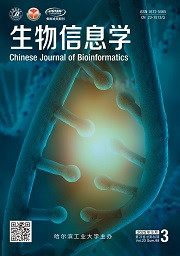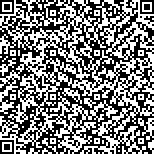| 引用本文: | 王秀菊,张天纲,玄萍.面向异构网中同质性和异质性信息编码的miRNA与疾病关联预测[J].生物信息学,2025,23(3):228-238. |
| WANG Xiuju,ZHANG Tiangang,XUAN Ping.Prediction of miRNA-disease associations by encoding homogeneity and heterogeneity information in a heterogeneous network[J].Chinese Journal of Bioinformatics,2025,23(3):228-238. |
|
| 摘要: |
| miRNA的失调与各种人类疾病的发生和进展密切相关,因此识别疾病相关的miRNA对于研究疾病发生机理至关重要。多数先前的方法是基于同质性假设提出的,即存在相互连接的节点通常具有相似的特征。因此,它们无法充分利用异质网络中多类节点属性和多样连接边的异质性信息。本研究提出了一个新的关联预测方法,HHIE,来编码和学习miRNA-疾病异构网络中的同质性和异质性信息。首先,我们建立基于低频和高频滤波器的同质-异质信息编码策略,来提取相互连接的节点特征的共性,即编码节点间的同质性。再者,该编码策略也针对多类节点的异质性,提取目标节点与多跳邻居节点间的差异性信息。然后,建立残差连接来聚合编码器中多层的输出,以降低传统节点特征聚合过程中容易产生的过平滑问题。最后,设计了局部信息聚合策略来整合目标节点与邻居节点的相似性,进而确定节点的同质性来引导特征融合。五倍交叉验证的实验结果表明,该研究方法HHIE在推断miRNA-疾病关联方面优于几个先进的预测方法。此外,消融实验展示了同质性信息学习、异质性信息编码和原始特征嵌入,对于疾病相关miRNA候选预测性能提升的贡献。 |
| 关键词: miRNA-疾病关联预测 同质性信息 异质性信息 同质-异质信息编码 局部信息聚合 |
| DOI:10.12113/202311016 |
| 分类号:TP39 |
| 文献标识码:A |
| 基金项目:国家自然科学基金项目(No.3,2);黑龙江省自然科学基金项目(No.LH2023F044);汕头大学科研启动基金项目(No.NTF22032). |
|
| Prediction of miRNA-disease associations by encoding homogeneity and heterogeneity information in a heterogeneous network |
|
WANG Xiuju1, ZHANG Tiangang2,XUAN Ping3
|
|
(1.School of Computer Science and Technology, Heilongjiang University, Harbin 150080, China;2.School of Mathematical Science, Heilongjiang University, Harbin 150080, China; 3.Department of Computer Science, Shantou University, Shantou 515063,Guangdong, China)
|
| Abstract: |
| Dysregulation of miRNAs is closely related to the occurrence and progression of all kinds of human diseases. Identifying disease-associated miRNAs plays an important role in investigation of pathogenesis of diseases. Most of the previous approaches were proposed based on the homogeneity assumption, i.e., the nodes with connections are usually more likely to have similar features. Therefore, they did not completely utilize the heterogeneity of the heterogeneous network with multiple types of node attributes and diverse connections. We proposed a novel association prediction method, HHIE, to encode and learn the homogeneity and the heterogeneity in the miRNA-disease heterogeneous network. We presented a strategy for encoding the homogeneity and heterogeneity based on the low-frequency and high-frequency filters. The strategy can extract the common features of nodes which reflect the homogeneity among multiple nodes. Moreover, the encoding strategy may obtain the discriminative features between a target node and its multi-order neighbor nodes. The residual connections are designed to aggregate the features from multiple encoding layers to alleviate the over-smoothing problem of feature aggregation. Finally, we presented a local information aggregation strategy to integrate the similarities between the target node and its neighbors, and then determine the homogeneity of nodes to guide the feature aggregation. The five-fold cross validation experimental results indicated that our method, HHIE, outperformed several state-of-the-art prediction methods for inferring the miRNA-disease associations. In addition, the ablation experiments demonstrated the contribution of homogeneity information learning, the heterogeneity information encoding, and the original feature embedding, to the improved prediction performance. |
| Key words: miRNA-disease association prediction Homogeneity information Heterogeneity information Homogeneity-heterogeneity information encoder Local information aggregation |






